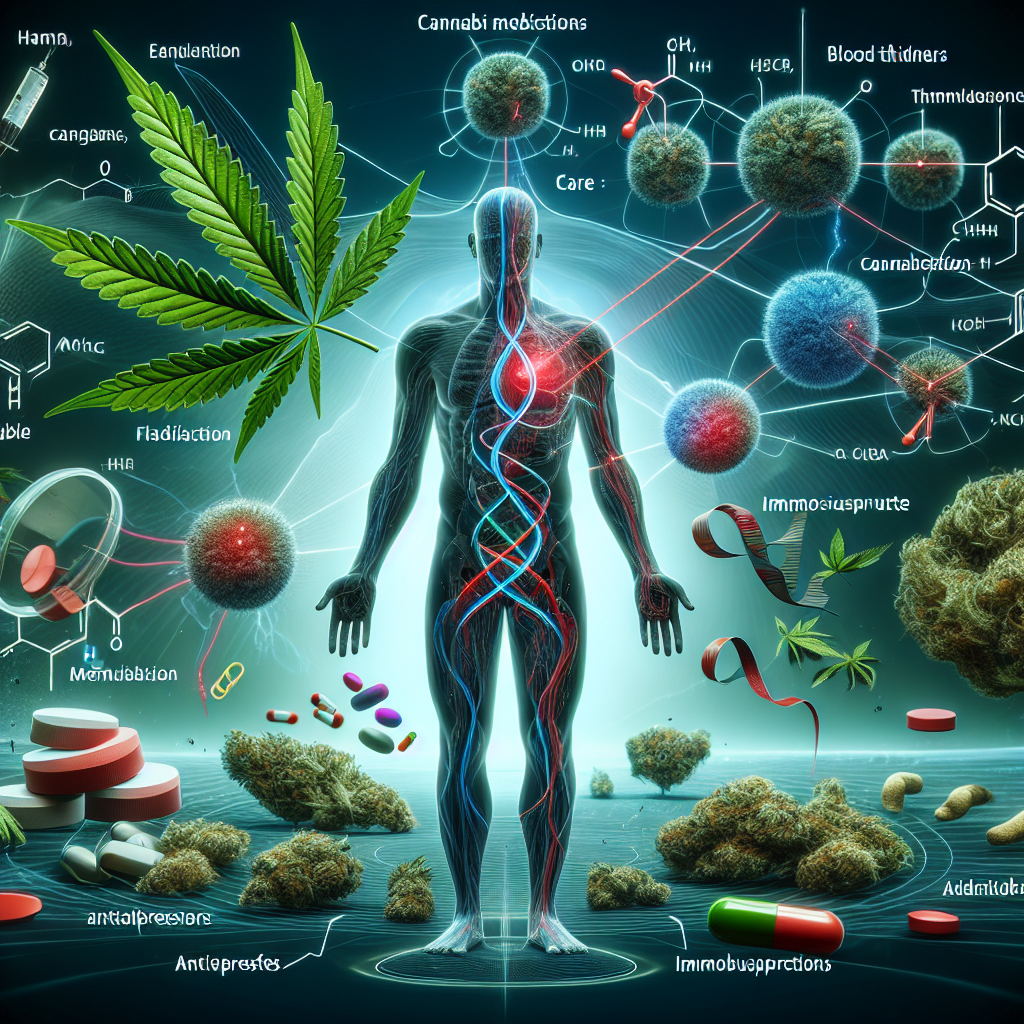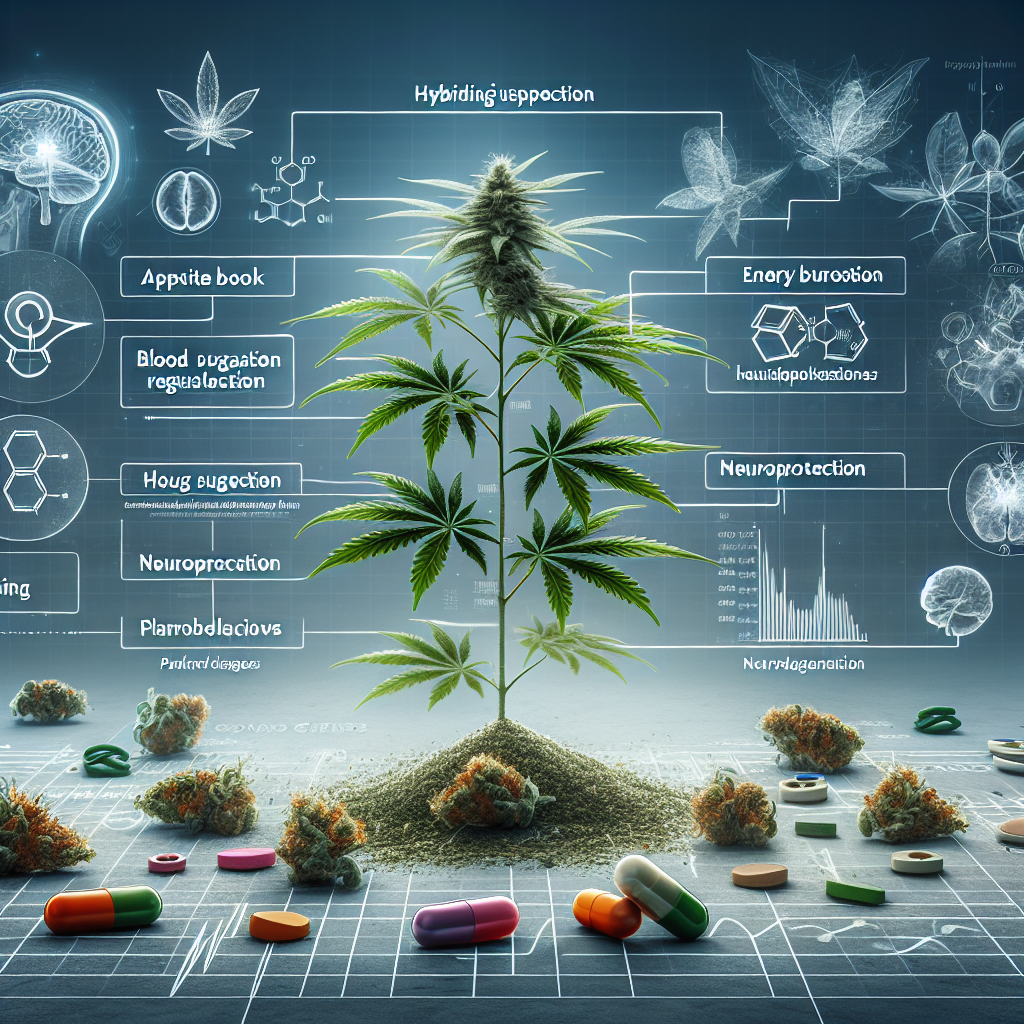Cannabis Drug Interactions: A Patient Safety Guide
Introduction: Responsible Cannabis Use Starts with Awareness
The increasing legalization and acceptance of cannabis worldwide bring with it a growing number of users—medical and recreational—eager to explore its benefits. However, as cannabis use becomes mainstream, it’s crucial to understand its potential interactions with other medications. Just like prescription drugs, cannabis can affect the body’s metabolism, leading to intensified side effects, reduced medication efficacy, or unintended health consequences.
At the heart of these interactions is the cytochrome P450 (CYP450) enzyme system in the liver. This pathway metabolizes many drugs and is significantly influenced by cannabinoids like tetrahydrocannabinol (THC) and cannabidiol (CBD). Without proper guidance, combining cannabis with commonly prescribed medications can pose serious risks. This guide explores the science of cannabis interactions and offers actionable insights for patients, healthcare providers, and cannabis professionals.
Understanding the Science: Why Do Cannabis Drug Interactions Occur?
Cannabis drug interactions primarily stem from THC and CBD’s effects on the CYP450 enzyme system in the liver. This vital system metabolizes nearly 60% of all medications. Cannabinoids have the ability to either slow down (inhibit) or accelerate (induce) the metabolism of other drugs, which can significantly alter their potency or efficacy.
Blood Thinners: A Dangerous Combination with CBD
One of the most well-documented interactions is between cannabis, CBD in particular, and blood-thinning medications like warfarin. Since both CBD and warfarin are metabolized by the CYP2C9 enzyme, CBD can slow the breakdown of warfarin in the liver, leading to elevated blood levels and potentially causing dangerous bleeding complications.
Key Fact:
A case study published in the Epilepsy & Behavior Case Reports Journal (2017) highlighted a patient using both warfarin and CBD who required continuous dosage adjustments due to this interaction. Frequent monitoring by healthcare providers is essential when combining the two.
Antidepressants and Anxiety Medications: Increased Risks and Sedative Effects
Cannabis also interacts with medications for mental health, such as antidepressants and anti-anxiety drugs.
– SSRIs (e.g., fluoxetine/Prozac): THC and CBD can elevate serotonin levels, which could lead to a severe condition called serotonin syndrome. Symptoms include heart irregularities, agitation, or fever.
– Benzodiazepines (e.g., diazepam/Valium): THC can amplify the sedative effects of these medications, causing excessive drowsiness, dizziness, and increasing accident risks.
Proper dosing and timing when using cannabis alongside mental health medications are crucial to avoid these adverse effects.
Antiepileptic Medications: Balancing Seizure Control and Side Effects
Cannabidiol (CBD) has gained attention as an FDA-approved treatment for epilepsy in the form of Epidiolex. However, combining it with conventional antiepileptic drugs requires close supervision.
For instance, when CBD and clobazam are used together, studies show that CBD raises blood levels of clobazam’s active metabolite, N‐desmethylclobazam. This increase heightens the risk of sedation and other side effects.
Key Insight:
A study published in Frontiers in Pharmacology (2020) emphasizes the importance of continuous monitoring for patients using this combination therapy.
Immunosuppressants: Striking a Careful Balance
Patients with organ transplants or autoimmune conditions often rely on immunosuppressive drugs like tacrolimus and cyclosporine. When cannabis is introduced:
– THC and CBD can change the levels of these drugs in the bloodstream by interfering with CYP3A4, a crucial enzyme for drug metabolism.
– Improper adjustments can lead to either rejection of transplanted organs or suppressed immune responses, making infections more likely.
Case Study:
The Transplantation Proceedings (2019) journal highlighted how CBD altered tacrolimus levels, underscoring the need for close medical supervision for patients utilizing both cannabis and immunosuppressants.
Alcohol: Synergistic Effects That Can Impair Judgment
While not classified as a prescription drug, mixing cannabis with alcohol deserves discussion. When consumed together:
– Alcohol and THC synergistically increase sedation, impair motor skills, and heighten the risk of accidents.
– Moderation and timing are critical for users who choose to combine the two substances.
This combination magnifies the psychoactive effects of both substances and should be approached with extreme caution.
How to Stay Safe: Practical Recommendations for Cannabis Users
To minimize the risks of cannabis drug interactions, here are some actionable tips for patients, healthcare providers, and cannabis professionals:
1. For Patients:
– Always disclose your cannabis use to your healthcare provider.
– Avoid making any changes to your medication or cannabis usage without consulting a professional.
2. For Healthcare Providers:
– Stay informed about the latest research on cannabis drug interactions.
– Monitor patients who are using cannabis in combination with other medications, particularly those metabolized by CYP450 enzymes.
3. For Cannabis Professionals (Budtenders):
– Educate consumers about the potential risks of combining cannabis with medications.
– Encourage patients to consult their healthcare providers for advice tailored to their unique health needs.
Conclusion: Safe Cannabis Use Requires Knowledge and Guidance
As cannabis becomes a mainstream medical and recreational choice, understanding its potential interactions with other drugs is vital for patient safety. Cannabinoids like THC and CBD can alter the metabolism of various medications, from blood thinners to immunosuppressive drugs.
Whether you’re a patient, healthcare provider, or cannabis professional, knowledge is power. By prioritizing informed use, we can ensure the safe and effective integration of cannabis into treatment plans and everyday routines. Cannabis has immense potential, but it must be used wisely to fully realize its benefits.
Summary:
This comprehensive guide explores the science behind cannabis drug interactions, highlighting the potential risks and safety concerns when combining cannabis with common medications like blood thinners, antidepressants, and immunosuppressants. The article provides practical recommendations for patients, healthcare providers, and cannabis professionals to ensure the responsible and informed use of cannabis.
References:
1. [Case Report: The Effect of Cannabidiol on the Pharmacokinetics of Anticonvulsant Drugs](https://www.ncbi.nlm.nih.gov/pmc/articles/PMC5576603/) – *Epilepsy & Behavior Case Reports Journal*
2. [Cannabidiol Interactions With Clobazam](https://www.frontiersin.org/articles/10.3389/fphar.2020.570671/full) – *Frontiers in Pharmacology*
3. [Cannabidiol and Tacrolimus Interaction](https://www.transplantation-proceedings.org/article/S0041-1345(19)30085-4/fulltext) – *Transplantation Proceedings*




